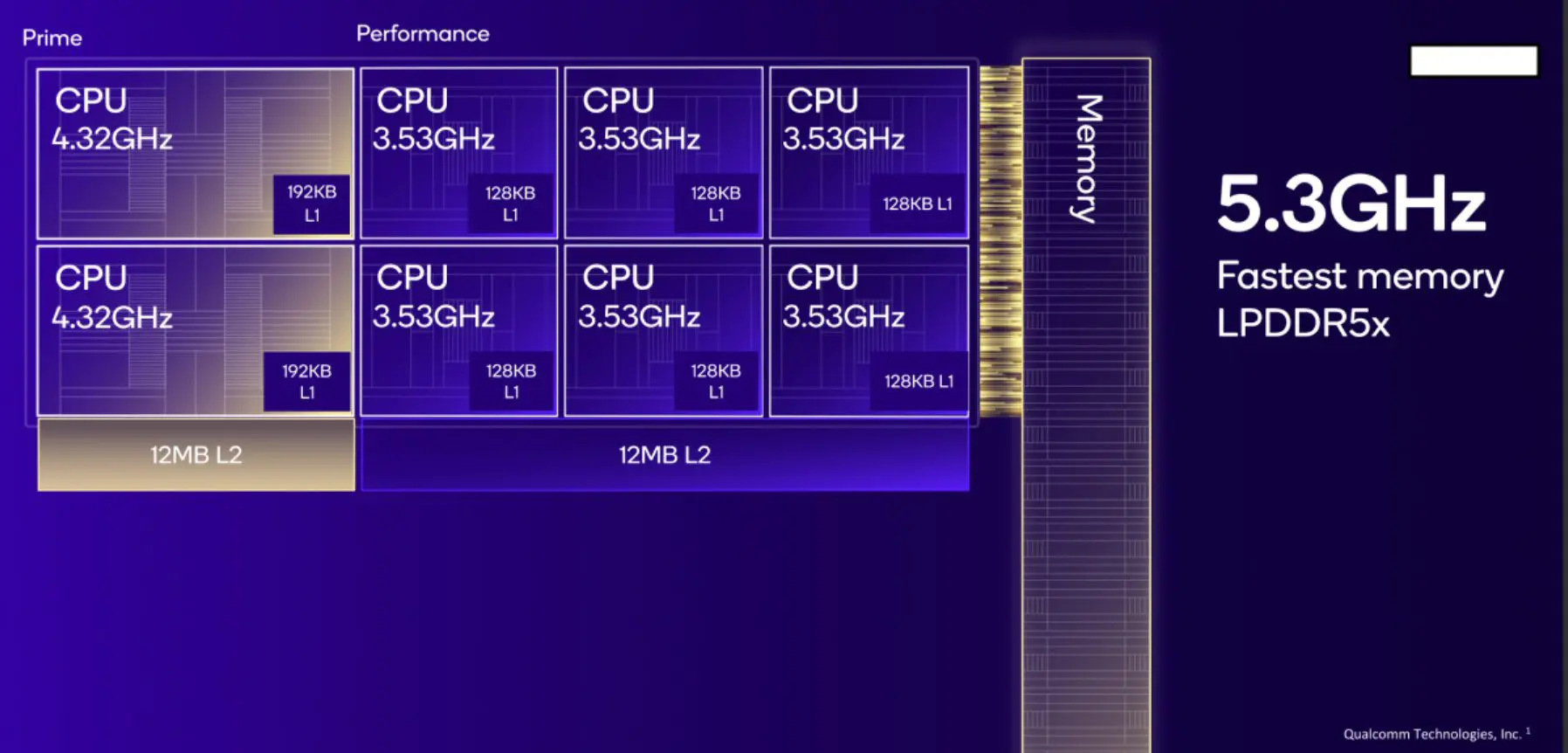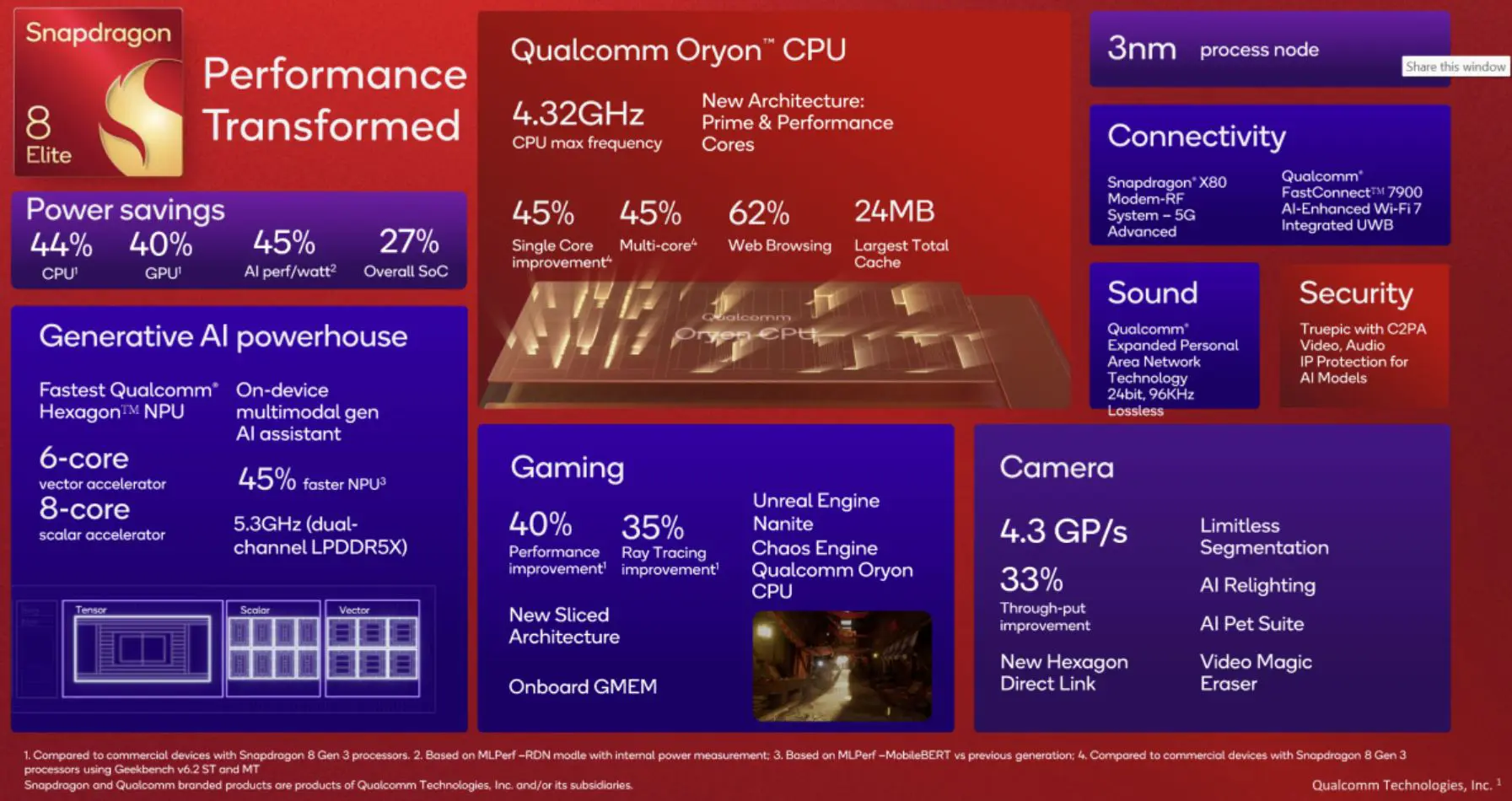Qualcomm’s new flagship chip for smartphones is an evolution of its latest CPUs found in PCs today.
This year Qualcomm impressed us with its Snapdragon X ARM chips in Windows 11 laptops. The chip is incredibly economical and performs as well or better than AMD and Intel equivalents. Both the Snapdragon X Elite and the X Plus were a hit. Now it is bringing the technology behind these chips to smartphones.
The Qualcomm Snapdragon 8 Elite will be in a lot of top smartphones this late 2024 and into 2025. The chip uses second-generation “Oryon” CPU cores, an evolution of the cores found in today’s Snapdragon X laptop chips.
According to Qualcomm, the new Oryon cores consume up to 44 percent less power while delivering 45 percent more multicore performance compared to previous Snapdragon 8 chips. TSMC is the chip maker on duty. Qualcomm uses the 3 nm process.
The main improvement is the addition of so-called “prime” cores that can perform at a higher clock speed (4.32 GHz vs. 3.53 GHz). You can see the diagram of the CPU distribution here:

By comparison, the current Snapdragon X Elite chips found in Copilot+ PCs have three clusters of four CPU cores all operating at 3.8 GHz. Whether the new “prime” cores will take their place in the next generation of Snapdragon X chips is anyone’s guess.
GPU and NPU
In addition to greatly improved CPU performance, the Qualcomm Snapdragon 8 Elite also promises a faster GPU that delivers up to 40 percent more performance than previous Snapdragon 8 mobile chips. The NPU gets a 45 percent speed boost.
That NPU was demonstrated during the presentation working on several local LLMs running on a smartphone.

Qualcomm closed its presentation with a hefty claim: the Snapdragon 8 Elite is faster than the latest Intel Lunar Lake chips. And that’s for a smartphone chip. It goes without saying that Qualcomm likes to roll with the muscle, but we cannot deny that the current Oryon cores are a shot in the arm and make Windows 11 on ARM finally viable.
Qualcomm says a lot of smartphone manufacturers including Samsung, OnePlus, Oppo and Xiaomi are on board. Waiting for the first devices to be available to test Qualcomm’s solid claims in practice.
read also
